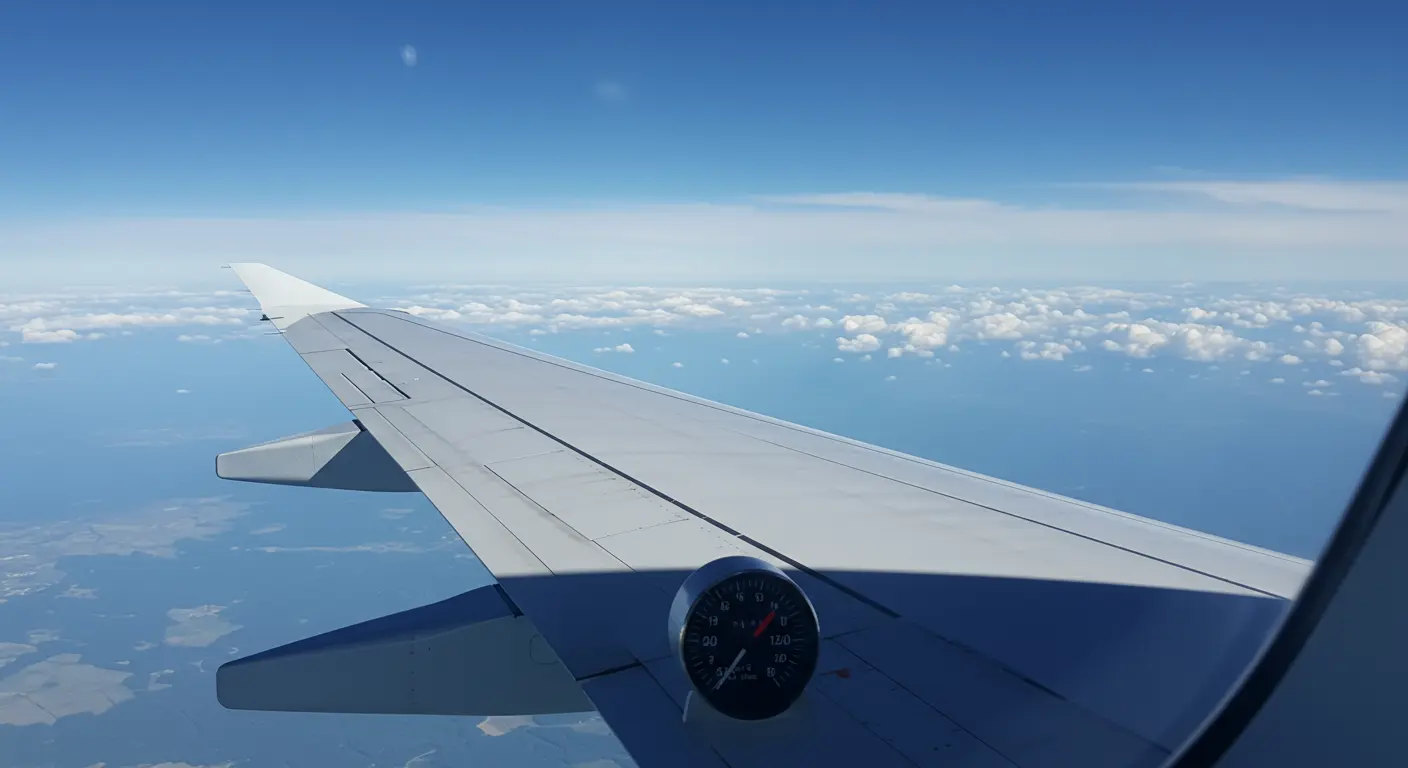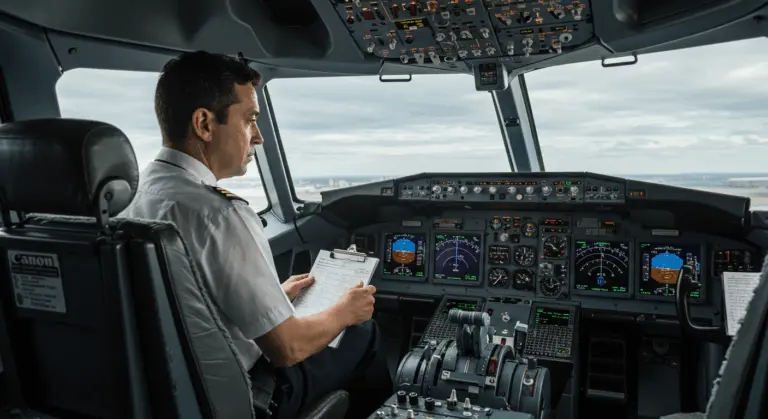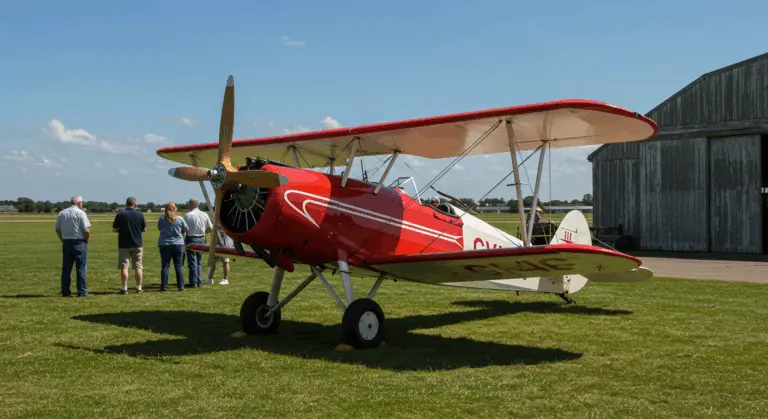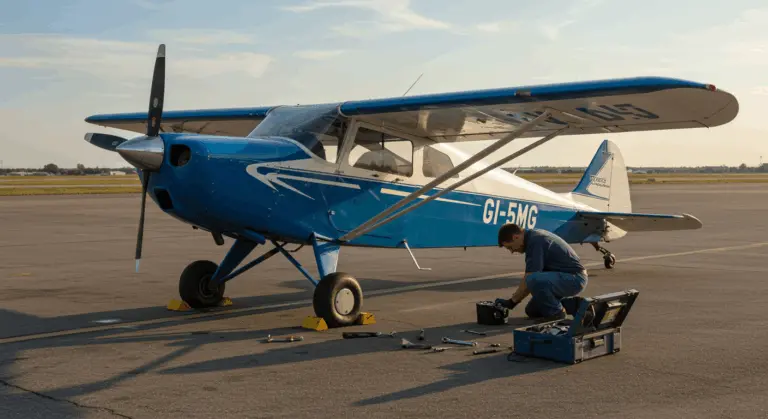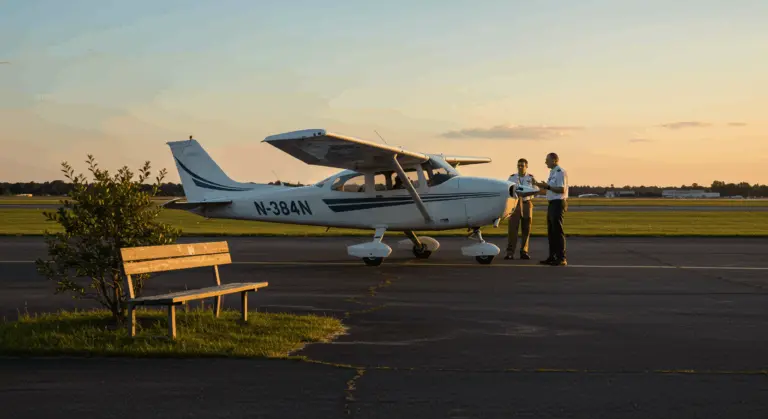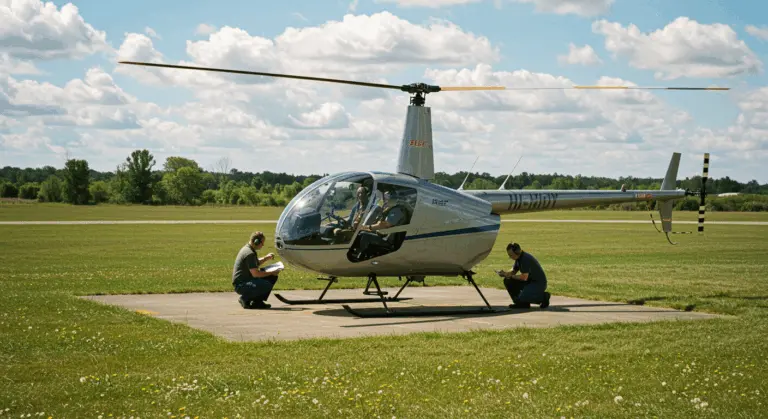What is Angle of Attack? – Definition and Explanation
Definition of Angle of Attack
The angle of attack (AOA or α) represents the angle between an airfoil’s chord line—that imaginary line stretching from leading to trailing edge—and the relative wind, which flows opposite to the aircraft’s flight path.
While this principle governs anybody moving through fluid, AOA serves as the key parameter that shapes airflow over the wing, affecting lift generation and overall flight characteristics.
Importance of Angle of Attack in Aviation
Angle of attack matters in aviation because It directly governs an aircraft’s performance, safety, and handling characteristics—giving pilots precise control over their machine, especially during those critical moments of takeoff and landing.
AOA determines lift generation predictably. Increase the angle, and lift follows—up to a crucial threshold. This relationship empowers pilots to command altitude and speed through AOA adjustments alone.
From a safety standpoint, AOA shows an important principle: aircraft stall only when critical AOA is breached, regardless of attitude or airspeed.
Today’s sophisticated aircraft feature angle of attack indicators that provide pilots with direct visual feedback about how close they are to the critical stalling point. This technology improves situational awareness, helping pilots maintain crucial margins from the stall point.
Critical Angle of Attack
The critical angle of attack—aviation’s stall angle—marks that precise point where an airfoil achieves maximum lift before airflow separation occurs. Most general aviation aircraft reach this threshold between 15 and 18 degrees, though airfoil design dictates the exact value.
At critical AOA, physics takes over. Airflow separates from the wing’s upper surface, causing lift to decrease dramatically.
What remains constant is that: critical AOA stays virtually unchanged for a given wing design regardless of weight, load factor, or airspeed. Whether flying slowly or at high speed, the aircraft stalls at essentially the same angle—only the airspeed changes. Ice changes everything, however, reshaping the airfoil and reducing from the critical angle.
Pilots need to understand that: exceed critical AOA, and control vanishes. That’s why stall recovery training emphasizes one key principle—reduce AOA first, everything else second.
Factors Affecting Angle of Attack
Several factors influence the AOA needed for any flight phase:
-
Aircraft Weight: More mass demands more lift—and higher AOA to generate it, pushing stall speeds upward.
-
Load Factor (G-Force): Aggressive maneuvers greatly increase the lift requirement. This means stalls can occur even at high airspeeds.
-
Wing Configuration: Flaps and slats change the wing’s aerodynamic properties, reshaping the wing to generate more lift at lower angles.
-
Environmental Conditions: Thin air—whether from altitude or heat—forces wings to work harder, demanding steeper angles for equivalent lift.
-
Surface Contamination: Ice or debris disrupts airflow, reducing the critical AOA and increasing stall risk.
Angle of Attack Indicators
Angle of Attack indicators mark a significant advancement in cockpit technology—instruments that directly measure this crucial aerodynamic parameter rather than leaving pilots to guess from secondary indicators like airspeed or altitude.
These systems use color coding: green signals safety, yellow indicates caution, and red warns of danger as the aircraft approaches its aerodynamic limits. Green usually indicates a safe operating range, yellow suggests caution, and red warns that the aircraft is approaching or exceeding its critical AOA. Advanced variants add audio alerts—audio warnings that alert pilots when stall threatens.
AOA indicators provide: instant aerodynamic truth, unfiltered by weight, speed, or G-force variables. They prove invaluable during demanding flight operations—short fields, aggressive turns, or deliberate slow flight where margins evaporate.
Aviation authorities, led by the FAA, promote AOA indicators to help prevent stall/spin accidents—accidents that still cause general aviation lives. From humble trainers to massive airliners, these systems now span the aviation spectrum. Even vintage aircraft can be upgraded through retrofit installations.
Flight training evolves accordingly, incorporating AOA awareness into pilot training. Direct stall margin feedback improves situational awareness and enhances safety.
Angle of Attack vs Pitch Attitude
One of aviation’s most dangerous misconceptions involves: mistaking angle of attack for pitch attitude. Though related, these concepts differ fundamentally—and understanding that difference is essential for flight safety.
| Feature | Pitch Attitude | Angle of Attack (AOA) |
|—|—|—|
| Definition | The angle between the aircraft’s longitudinal axis and the horizon. | The angle between the wing’s chord line and the relative wind. |
| Pilot’s View | Visible on the attitude indicator (where the nose is pointing). | Not directly visible without a dedicated AOA indicator. |
| Relation to Stall | Does not determine a stall. An aircraft can stall at any pitch attitude. | Directly determines a stall, which occurs when the critical AOA is exceeded. |
This distinction highlights an important fact: stalls depend on AOA, not pitch attitude. An aircraft can stall in any attitude—nose high, nose low, or level—if critical AOA is exceeded.
Conclusion
Angle of attack is one of aviation’s fundamental concepts—that critical angle between wing and wind that governs lift itself. The key principle is that: aircraft stall at essentially constant critical AOA, regardless of weight, speed, or configuration changes.
Understanding this principle is essential for safe flight, explaining stalls’ ability to strike at any speed or attitude while revealing how weight and G-forces manipulate risk.
Understanding the difference between visible pitch attitude and invisible AOA—because AOA alone determines lift and stall behavior.
As technology advances, spreading AOA indicators across cockpits worldwide—from basic trainers to flagship airliners. These instruments provide direct aerodynamic information, expanding safety margins and potentially reducing stall-related casualties.
Understanding AOA principles helps pilots, by replacing misconceptions with sound aerodynamic knowledge. It’s knowledge that saves lives.

